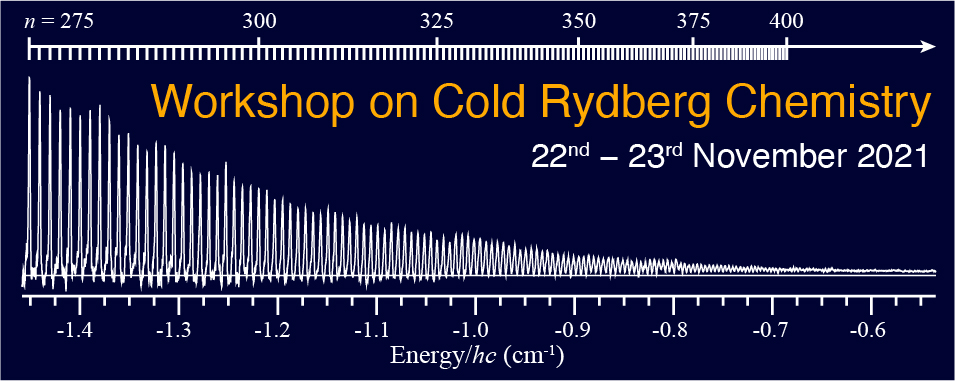Speaker
Description
Based on their dispersion coefficients Cote et al. suggested the existence of macrodimers, or double Rydberg molecules. Later Kiffner et al. suggested that bound molecules could be formed between two asymptotic states. The first experimental evidence for bound double Rydberg molecules was presented by Overstreet et al. Saffmanhausen and Deiglmayr, and Hollerith et al provided spectroscopic evidence for these molecules. Here we discuss microwave resonance transitions between pairs of Rydberg atoms, double Rydberg molecules, although they are not necessarily bound. Rb atoms in a magneto optical trap are excited to a Rydberg state with a narrow band pulsed laser, after which a microwave field drives the molecular transition, for example the transition ndnd +hν→(n+1)d(n-2)f. This transition is most easily understood as being due to the admixture of the (n+2p)(n-2)f state into the ndnd state by the dipole-dipole interaction, which allows the single photon microwave transition to the final (n+1)d(n-2)f state to be driven.. Alternatively, the transition can be treated as a Forster resonance of dressed or Floquet states. While the basic notions of these transitions are understood, there remain several questions. One is the width of the microwave resonance. What determines it? The process nsns+2hν→np3/2.np1/2 .provides a clue. It is broadened asymmetrically to lower frequency, presumably due to the van der Waals interaction with the energetically nearby ns(n+1)s state. At the average separation of the trap this interaction is negligible, but for the pair of closely spaced atoms undergoing the microwave transition, it is not. In the ndnd→(n+1)d(n-2)f case there is a previously ignored resonant final state dipole -dipole interaction, with the (n-2)f(n+1)d state, which leads to the observed broadening. The nsns+2hν→np3/2.np1/2 case presents as well a fascinating question. In theory, the transition is only possible due to the three dimensional nature of the dipole-dipole interaction, that is to the fact that the microwave field is not aligned with the molecular axis. In a lattice it should be possible to verify or refute this claim. This work was supported by AFOSR.

